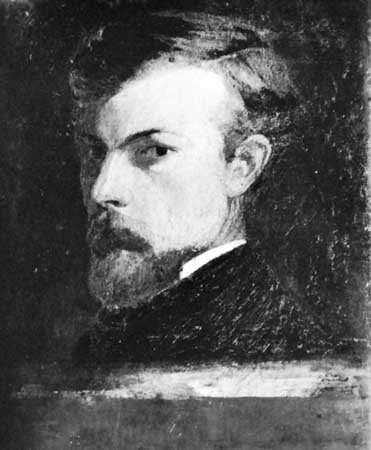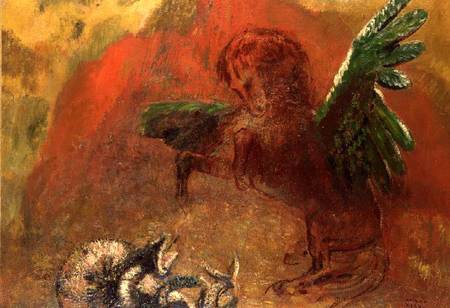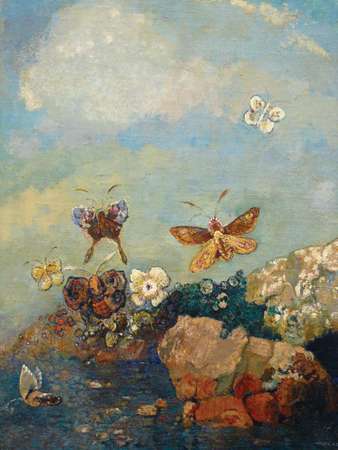Odilon Redon

Born in Bordeaux, France to a peasant father and Creole mother, Odilon Redon was an agreeably-great artist and printmaker who first learned drawing in his hometown, then architecture and painting in École des Beaux-Arts.

He had an opposition towards lessons given by artist Jean-Léon Gérôme and instead was taught by engraver Rodolphe Bresdin. His time with Bresdin defined the beginning of his career, with small engravings of landscapes from childhood memories, influenced by artists like Camile Corot and Eugene Delacroix. Odilon also created oil paintings that sometimes involved figurative and religious subjects.

In his autobiography, À Soimême, he mentions the main subjects in his work, those being ‘Man and Nature’ and “suggestive” art. These subjects were influenced by his friends: Armand Clavaud and Stéphane Mallarmé.


Eventually, Redon became the Société des Artistes Indépendants president in 1884, even beginning to display his work in Salons around 1904. He influenced the work of his peers, including Paul Gauguin, and was admired by Symbolist writers during his time.
Odilon then died on July 6, 1916, in Paris, but not without influencing the world of 20th-century art. His disinterest in realism was one of the major influences of the Surrealist art movement.
WORKS CITED
- “Redon, Odilon (1840 – 1916).” The Bloomsbury Guide to Art, edited by Shearer West, Bloomsbury, 1st edition, 1996. Credo Reference, https://ezproxy.capilanou.ca/login?url=https://search.credoreference.com/content/entry/bga/redon_odilon_1840_1916/0?institutionId=6884. Accessed 02 Nov. 2019.
- “Redon Odilon (1840 – 1916).” A Biographical Dictionary of Artists, Andromeda, edited by Lawrence Gowing, Windmill Books (Andromeda International), 2nd edition, 1995. Credo Reference, https://ezproxy.capilanou.ca/login?url=https://search.credoreference.com/content/entry/andbda/redon_odilon_1840_1916/0?institutionId=6884. Accessed 02 Nov. 2019.
- “Mallarmé, Stéphane.” Britannica Concise Encyclopedia, Encyclopaedia Britannica, Britannica Digital Learning, 2017. Credo Reference, https://search-credoreference-com.ezproxy.capilanou.ca/content/entry/ebconcise/mallarme_stephane/0. Accessed 02 Nov. 2019.
- The Editors of Encyclopaedia Britannica. “Odilon Redon.” Biographies, 25 Aug. 2019. Encyclopædia Britannica, inc., https://www.britannica.com/biography/Odilon-Redon. Accessed 02 Nov. 2019.
- Seiferle, Rebecca. “Odilon Redon Artist Overview and Analysis.” The Art Story, The Art Story Contributors, 30 Mar. 2017, www.theartstory.org/artist/redon-odilon/. Accessed 02 Nov. 2019
IMAGES OBTAINED FROM
- https://www.britannica.com/biography/Odilon-Redon
- https://www.art-prints-on-demand.com/a/odilon-redon/pegasus-triumphant.html
- https://www.artsy.net/artwork/odilon-redon-dans-le-reve-portfolio-of-11-lithographs
- https://www.clevelandart.org/art/1926.25